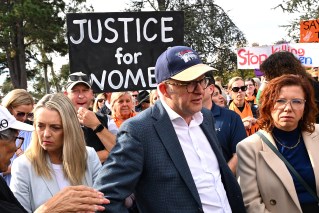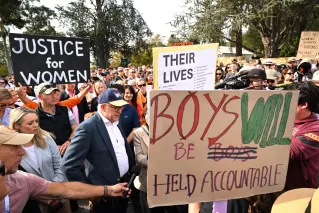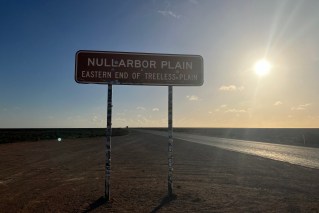How the key to political success in Qld has always been about managing growth
Policies on how to manage Queensland’s growth have always been front and centre of the state’s political debate. Next year’s election will be no exception, writes Greg Hallam


Managing the state's growth, in particular the politics of growth, has become far more problematic over the past few decades. (Image: Unsplash)
For the last 50 years Queensland’s economic growth in the industrial, mining, tourism and property sectors has equaled success at the ballot box.
Sir Joh’s famous cranes on the skyline metaphor for growth still holds sway with a lot of Queenslanders. But managing growth, in particular the politics of growth, has become far more problematic over the past few decades. Nuance upon nuance.
Let’s face it Queenslanders, at least the 65 per cent of us who own property are schizophrenic on the subject of growth. People form the view of their wealth and prosperity largely on the value of their home, more so than superannuation scheme balances.
Every month, the house and unit price index is met with more fanfare in the media and community than the CPI, labour market or GDP figures .
There is much hand wringing about homelessness and housing affordability , yet deep down two thirds of Queenslanders secretly barrack for more expensive property once they have entered the property market .
Against that we protest traffic congestion and long delays, not getting a park at the beach, over crowding in schools, ambulance ramping and clogged treatment centres at our public hospitals as well as overcrowded prisons and juvenile justice centres. Let alone the destruction of parts of the environment in the name of growth.
All that said , deep down rational thinkers know the opposite of growth is decline and or stagnation, and that you can’t redistribute poverty.
During the Bjelke-Petersen government years, especially post the abolition of death taxes, interstate migration was seen as affirmation to banana benders that Queensland was the place to be.
There was even a published weekly public count of fellow Australians moving into the Sunshine State.
Mining was king and a host of new mines in Central Queensland opened up, which in turn supported new railway lines, power stations and ports .
At that time , growth equaled jobs and progress, and government failings pretty much could be forgiven as long as there was perceived economic progress.
Moving on to the Goss Government era of the late 1980s to the mid 1990s the need to provide public services and infrastructure to keep up with growth became paramount.
Moreover , the environment movement was starting to exert real influence on public discourse.
Planning the South Coast Motorway from Logan to the Gold Coast and the attendant furore over koalas was a cause celeb. It’s wrongly attributed as the main reason the Goss Government lost office.
Key figures from that time say that whilst it contributed to the loss, it was more a global it’s time limited terms of office phenomena. Goss’s personal policy rectitude over politics approach, plus the perceived arrogance of that administration were the real drivers of the eventual change of government.
During the short life of the Borbidge Sheldon government progressive thinking by planning minister Di McCauley and her director-general Kevin Yearbury saw the new state framework for planning emerge, one that was adopted by subsequent Labor governments .
During the early Beattie Government years interstate growth reignited, concomitant with the collapse of some economic institutions and a number failed state labor governments around the nation.
It was only the early part of the century that Beattie and his Deputy Terry Mackenroth saw the need for some government control of growth . That government was under the pump for decades of failure to invest in major water infrastructure, and indeed electricity assets, not to forget urban transport.
A new state wide system of regional planning was introduced and genuine but subsequently thwarted attempts were made to match infrastructure spending to the state’s growth hotspots.
There’s no doubt that strategy was one of the reasons behind the two Beattie electoral landslides that decade. The government was seen as having a plan for growth.
Planning and growth management continued to be fundamental to the Bligh and Newman administrations , albeit with its own flavours and challenges – coal seam gas fracking to name but one.
Interstate growth not only slowed but reversed at different times over those six years .
The election of Annastacia Palaszczuk in 2015 very much mirrored the climate change debate and movement.
The latter half of the Palaszczuk administration has been heavily influenced by the return of strong interstate migration, especially post Covid. Not to forget a sea change in opinion against coal mining expansion , most particularly the Adani mine in Central Queensland .
Over the course of 2023 the politics of growth has been front and centre with huge strains on the public hospitals and broader health sector.
There’s been massive commercial collapses in the building sector due to supply constraints.
Hutchinson Builders boss Scott Hutchinson has recently said it’s the most difficult environment in the construction sector since the 1970s – paradoxically during an unprecedented growth boom.
To top it off recent polling by Tourism and Events Queensland found 70 per cent of Gold Coasters did not want tourism to get any bigger, concerned about the impact on lifestyle and prices.
Significantly the same study found the gloss of tourism was also wearing off on outback towns residents.
The growth debate is both cyclical and fickle. We want growth but on our terms. Over time the policy setting has moved from laissez faire to managed growth ,pull up the drawbridge, too confused.
The Greens will have a field day riding off the back of reignited rapid growth, and be in the hunt for more seats at next years’ State poll.
The Greens aside, which ever of the major parties has the most cogent and wholistic narrative for maximising the benefits of growth while containing its downside will go along way to winning the October 2024 election .
What does a better Queensland look like?
Greg Hallam is a former Chief Executive of the Local Government Council of Queensland and is an authority on the state’s regions. He writes regularly for InQueensland.












